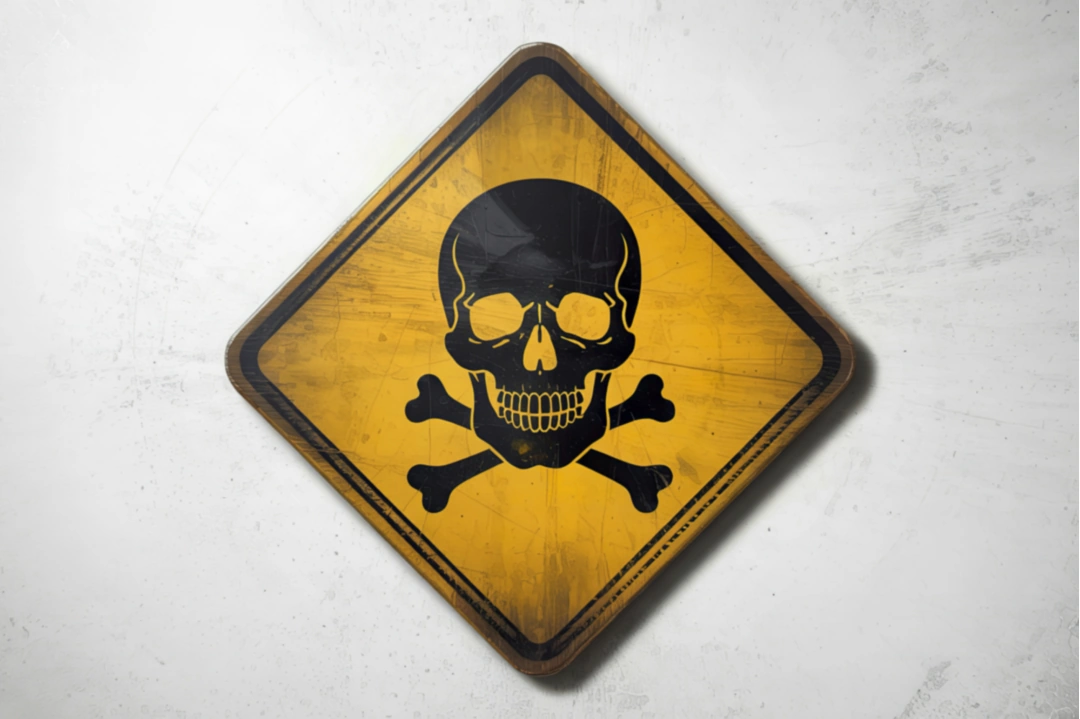
The Skull And Crossbones Symbol: How To Handle Toxic Materials In The Workplace
Every workplace with lone workers must maintain a reasonable level of safety while tasks are being carried out. Recognizing workplace hazards, especially those marked by the toxic symbol, is a major part of this, allowing everyone to maintain a safe environment. Most don’t give much thought to this symbol when they see it pop up, but it should be a warning to take whatever it’s placed on seriously. Understanding the meaning of the toxic symbol and how it highlights the risks linked to toxic substances can help employers take proper precautions and protect their workforce.
What Role Does The Toxic Symbol Play In Workplace Safety?
The skull and crossbones symbol should be familiar to anyone invested in workplace safety, especially in environments with lone workers. It serves as a universal alert to the presence of hazardous substances that can pose serious health risks. This symbol should be easily perceived and acknowledged by anyone who sees it, as it helps identify potential dangers that could lead to severe health issues or even fatalities.
This symbol categorizes materials harmful to human health, including chemicals and gases that can cause harm through inhalation, ingestion, or skin contact. When this symbol appears on a label or container, it signals that the contents are toxic and require careful handling and strict adherence to safety protocols to avoid danger.
Lone workers need to be familiar with hazard symbols like the toxic symbol. Without immediate access to help during an exposure incident, they must quickly and accurately identify potential dangers. This awareness enables them to implement safety measures, such as using personal protective equipment or following specific handling procedures, to reduce the risks associated with toxic materials.
Employers should educate their workers about hazard symbols as part of their safety training. Ensuring that employees recognize the toxic symbol and understand its implications fosters a culture of safety and vigilance, protecting lone workers from danger and contributing to a safer and more efficient workplace.
Common Hazards Associated With The Toxic Symbol
Substances marked with the toxic symbol can pose serious health risks, including respiratory problems, organ damage, or even life-threatening conditions. These hazards are often found in chemicals like pesticides, industrial solvents, and certain cleaning agents. The risks are particularly prevalent in agriculture, manufacturing, and chemical processing industries. Lone workers in these fields face unique challenges, as they often work without immediate support, making it necessary for them to quickly identify and respond to these hazards.
Exposure to toxic substances can lead to long-term health issues, such as chronic respiratory diseases or neurological disorders, in addition to the direct health impacts. This makes it imperative for employers to ensure that lone workers are not only aware of the immediate dangers but also the potential long-term consequences of exposure. Employers should also consider the psychological stress that can accompany working with hazardous materials, as the responsibility of managing these risks alone can be daunting.
Moreover, industries like healthcare and waste management also encounter toxic hazards. Healthcare workers might handle pharmaceuticals or biological agents with toxic properties, while waste management employees could be exposed to hazardous waste materials. In these environments, the toxic symbol serves as a critical warning to exercise heightened caution and adhere strictly to safety protocols. Comprehensive training and regular safety drills can help lone workers in these sectors develop the skills and confidence needed to handle toxic materials safely.
Compliance And Safety Regulations
Employers of lone workers must navigate a complex landscape of safety regulations to ensure their operations comply with legal standards and protect their employees. The Occupational Safety and Health Administration (OSHA) in the Canada and the Control of Substances Hazardous to Health (COSHH) regulations in the United Kingdom provide comprehensive guidelines on managing toxic substances that every workplace should use as a policy guideline. These regulations mandate proper labeling, storage, and handling of hazardous materials, emphasizing the importance of the toxic symbol as a key identifier of potential dangers.
Compliance with these regulations is not just a legal obligation but a crucial aspect of workplace safety. Employers who fail to adhere to these standards risk facing significant penalties, including hefty fines and potential legal action. More importantly, non-compliance can lead to increased incidents of workplace injuries or illnesses, which can have severe repercussions on employee well-being and organizational reputation.
To maintain compliance, employers should conduct regular safety audits and inspections. These evaluations help identify any gaps in safety protocols and ensure that all procedures align with current regulations. Additionally, staying informed about updates or changes in safety standards is essential for continuous improvement in workplace safety practices.
Implementing Safety Measures For Lone Workers
Robust safety protocols and emergency procedures are necessary for protecting lone workers in hazardous environments. Employers should create clear guidelines for exposure incidents, including containment, decontamination, and medical assistance steps. Personal protective equipment (PPE) is another important safety measure, with items like gloves, masks, and goggles being essential depending on the hazard. Ensuring PPE is available and workers are trained in its use is just as crucial as safety equipment that no one knows how to use properly is barely better than none at all. Effective communication systems, such as regular check-ins or safety apps, are vital for quickly reporting hazards and incidents.
Conclusion
Addressing toxic hazards is necessary for the safety of lone workers. Employers must prioritize compliance and safety measures to protect their workforce and maintain a secure working environment. By implementing the discussed safety measures and best practices, employers can significantly reduce the risks associated with toxic substances. Taking proactive steps in worker education and fostering a culture of safety awareness are also a big help for safeguarding employees and enhancing operational efficiency and workplace morale.
Read More From the Lone Worker Blog
The Dangers Of Black Ice In The Workplace

Black ice is a hidden workplace hazard that can catch even the most vigilant lone workers off guard. This invisible layer of ice forms on roads and walkways, making it a significant risk during the winter months.
Read MoreUnderstanding Occupational Health & Safety Guidelines In Canada

Occupational Health & Safety Guidelines (better known as OHS Code) informs most of the lone worker policies across Canadian provinces.
Read More


